“Let It Be” at Last: Director Michael Lindsay-Hogg on the Long Redemption of His Controversial Beatles Doc (Exclusive)
Now available for the first time in over 40 years, the restored film is so much more than its troubled reputation as the definitive document of the band's split
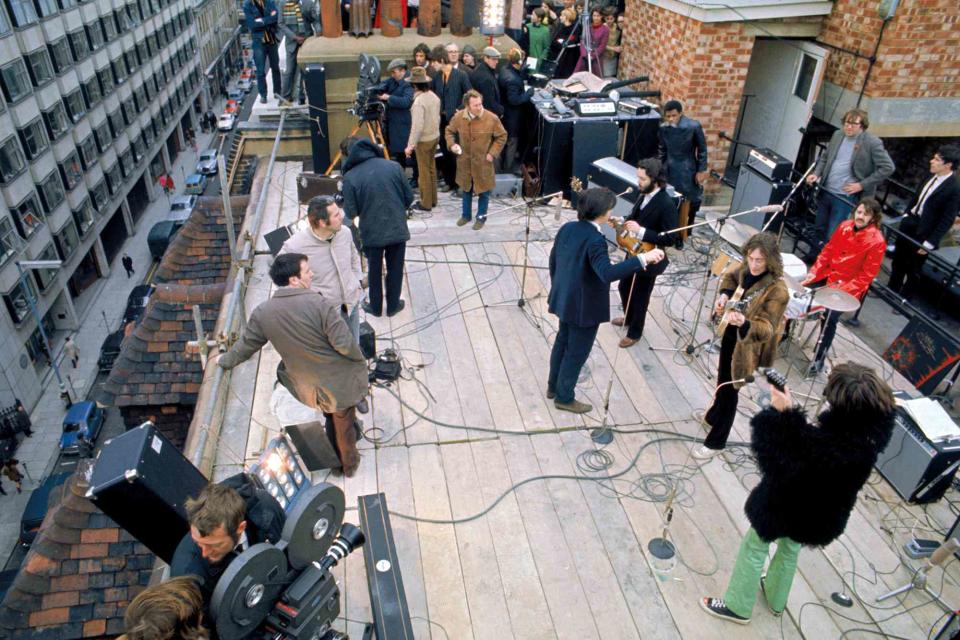
For over 40 years, Michael Lindsay-Hogg’s 1970 documentary Let It Be has been both a glaring absence in the Beatles' canon and something of a boogeyman
Even the Beatles themselves seemed happy for Let It Be to rot in the vault
On Wednesday, Let It Be is available to stream on the Disney+ platform
For over 40 years, Michael Lindsay-Hogg’s 1970 documentary Let It Be has been both a glaring absence in the Beatles' canon and something of a boogeyman. Long out of print, it’s taken on the legacy of a snuff film depicting the band in its death throes as they bicker their way through recording the album of the same name — the spiritual inverse of those four fresh faces shaking their mop-tops in joyous harmony only a few years earlier. This reputation has persisted for decades despite few having actually seen it. Those who have were reliant on either the faded visuals of a bootleg VHS tape, hampered by dark and grainy visuals and fuzzy sound, or faded memories. Released just weeks after news of the Beatles’ split stunned the world, audiences studied every scene looking for cracks in their bond. The film was instantly tainted by the unhappy mood of the times and tagged as the definitive document of their demise. The fact that it had been shot a year and a half earlier, during which time the Beatles managed to record an additional album, seemed to matter little.
Even the Beatles themselves seemed happy for Let It Be to rot in the vault. An emotionally raw John Lennon, fresh off a course of intensive primal scream therapy, reportedly cried after seeing it in theaters with Rolling Stone editor Jann Wenner. George Harrison referred to it as a “fiasco” and “painful,” and Ringo Starr has remarked on several occasions in recent years that the film has “no joy.”
On Wednesday, Let It Be is available to stream on the Disney+ platform, giving many fans their first opportunity to properly see Lindsay-Hogg’s film and judge for themselves. Nearly 54 years to the day since its initial debut, the viewing experience is undeniably different this time around. This is partially because 2024 is a long way off from 1970, both in terms of Beatle fans and media consumption. Not only has the shock of the breakup given way to potent nostalgia and rabid interest in all things Fab, but audiences weaned on reality TV and warts-and-all rock docs are far more accustomed to the sight of “creative differences” on the screen. As a result, the supposed inter-band blow-outs are revealed for what they are: civil discussions among collaborators, the likes of which occurred throughout the band’s career. (To wit: Paul McCartney reportedly stormed out of a session for 1966’s Revolver! Ringo took an unscheduled break during the White Album!) Even these are few and far between. Much of the movie showcases the band seemingly having a ball ripping through loose jams or oldies from their Hamburg club days in between polishing off instant standards like “The Long and Winding Road,” “Get Back,” “Two of Us,” “I’ve Got a Feeling” and the title song — all before launching into their legendary swan song on the roof of their London office. With all due respect to music’s greatest stickman, there’s plenty of joy to be found.
The latest version of Let It Be is enhanced by digital restoration by director Peter Jackson, the technical-guru-in-residence for the Beatles’ Apple imprint. The documentary was shot for a proposed TV broadcast on 16-mm film, which was then blown up to 33-mm once the Beatles belatedly decided to give it a theatrical release. This caused the graininess and dull colors that dogged the original. Jackson was able to strip back the grimy darkness while still maintaining the authentic vintage feel, and also clear up the muddiness of the original audio through the use of his patented Machine Automated Learning “de-mixing” technology he’s employed to oversee the recent stereo remasters of the band’s recorded output.
Let It Be’s image rehab began in earnest thanks to a previous Jackson project, 2021’s Get Back, essentially a documentary about the making of Let it Be. The epic 8-hour docuseries drew from Lindsay-Hogg’s original footage shot in January 1969 to detail the chaotic nature of the production as it morphed from a live concert TV special to a theatrical documentary mid-stream. Though absent in his own film, Lindsay-Hogg emerged as Get Back’s breakout star, playing the all-too-real role of the harried director coping with one logistical headache after another (including George Harrison's temporary departure), all while desperately trying to coax an ending out of the four easily-distracted geniuses who served as both his leads and also his bosses.
Now 84, Lindsay-Hogg has earned well-deserved recognition as a pioneering music video director in addition to his enormously successful career in film, television and theater — having helmed projects for Neil Young, the Who, the Rolling Stones and Simon & Garfunkel's historic 1981 reunion concert in Central Park. For years he was the chief champion of Let It Be as it languished unseen and largely unappreciated. Few were as surprised as he to learn that his misunderstood movie was being given another chance. The thunderous applause that greeted Lindsay-Hogg and the restored Let It Be at the New York premiere last week came as a welcome antidote to the 1970 premiere, which the Beatles didn’t even bother to attend. The reception offered signs that audiences will recognize the documentary for what it is — a rare and intimate portrait of the Beatles at work, brimming with fun, excitement and hope. Watching them make magic on the rooftop, it’s hard to imagine that it was getting very near the end.
Lindsay-Hogg sat down with PEOPLE shortly after the premiere to discuss the long and winding return and redemption of Let It Be.
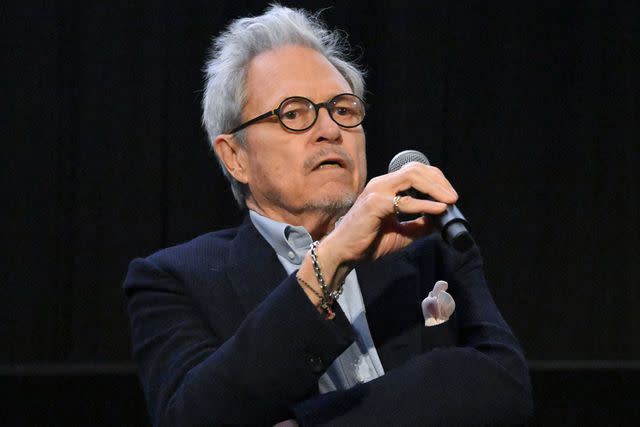
Dave Kotinsky/Getty
Director Michael Lindsay-Hogg in New York City in April 2024First and foremost, I want to offer a hearty congratulations! How does it feel to have Let It Be back out in the world at last?
Kind of amazing, really. I was pretty sure it wasn't going to come out again, although several of us were advocating for it. It picked up steam after Get Back, but it wasn't a dead certainty until maybe six months ago. Then it was, "Yes, it's going to come out, but no one is quite sure when." For me it's been kind of like a dream come true. Quite moving.
Is it vindicating in a certain sense, too?
Yeah, to a degree because the reaction from people who've seen it as it should have been [back in 1970] — as it is now — has been very positive and everybody seems to have a good time. They see whatever values it has. For years I was trying to say, "No, no, it's gotta come out, it's gotta come out, you have to see it." Because it wasn't seen properly the first time around. It had a lot of little things to trip over. I always thought it was good, and I always thought, in its way, it was kind of valuable about the Beatles and about who they were. I tried to put that in the movie; who they were, who they had been, who they were becoming. And the songs they were creating for Let It Be were so beautiful. It made me sort of depressed for a while that no one was seeing it. There have been moments when I thought, "It's really too bad it's not going to come out again because there is stuff in it that I think would be interesting to people."
It didn't get a fair shake because the Beatles weren't interested in it because they'd broken up. It just seemed like they didn't care anymore. That’s what happened in 1970. I think it was shown on the BBC a couple times in the early 1970s. Then there's the VHS, which they released. Then there was some issue to do with the music rights, so they had to pull [the release] because they hadn't sorted this out. And then, when anyone in the company said, “Well, let's put out the VHS of Let It Be again,” there was [groans]. It was a Beatles movie and there wasn't any Beatles anymore.
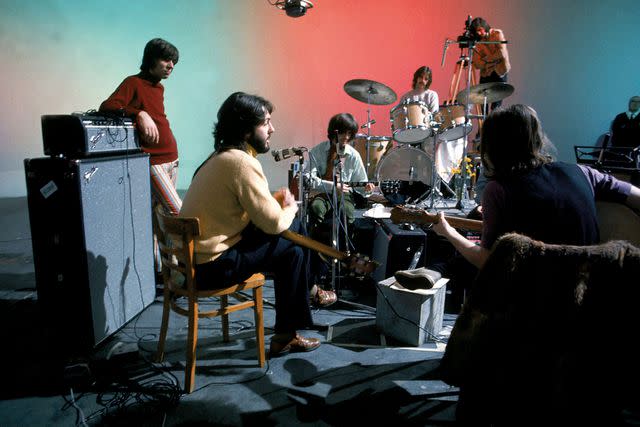
You’ve said on many occasions that Let It Be was a victim of timing. All the bad feelings circulating during the band’s breakup in May 1970 were projected onto it by both the public and the Beatles themselves. As recently as two weeks ago, Ringo said there was “no joy” in your documentary. But considering they were producers on the film I imagine nothing was released without their approval. What were their comments at the time?
I showed the final cut to them and we all had dinner afterwards. Then we went down to a discotheque underneath the restaurant. Ringo was jiving 'til two in the morning, Paul said he liked the movie…It was all a very good experience until they broke up, which was only two months after they'd seen the picture ready to go. And then, of course, there was so much going on to do with the breakup. First it was legal issues, but then legal issues became personal issues. By that point, Let It Be was kind of a little character in the corner saying, "Oh, remember me? Remember me?" They were not interested in it anymore, which they had been up until that point. There was just so much going on.
You’ve described the film as being “orphaned” upon its initial release, when the Beatles didn’t even attend the premiere. I wanted to ask you more about that.
That’s what Peter [Jackson] said — “orphaned.” The first time we met he said, "Tell me the story of Let It Be.” This was back in 2018. So I did and he listened very carefully, and then he said, “You know, except for you trying to help Let It Be, it would really be an orphan.” And I thought, “Ooh, he's very smart.” Because it was abandoned, like orphans are. And now, here it is. It's not an orphan anymore and I'm pleased.
I was one of those who had an illicit VHS copy of Let It Be as a kid, so I knew the movie well. But I feel as though I have much more appreciation for it after watching Get Back and knowing the logistical issues you were up against.
The thing about working in rock and roll in those days was you kind of had to be on your feet, because things changed a lot. I remember once doing an early video with the Who. We lined up a three shot and the [director of photography] went off to light it. We left the set but when we came back, there was only two — two Who. One of them, probably Keith Moon, had wandered off. He was out in the street and we couldn't get him back. So what was a three shot is now a two shot.
It was unstable in those days. And this is before the big drugs… It was kind of a chaotic world, which I understood. I always tried to capture the chaos. I always liked the cameras to be in it, and not just watch it. I wanted the cameras to be part of the chaos.
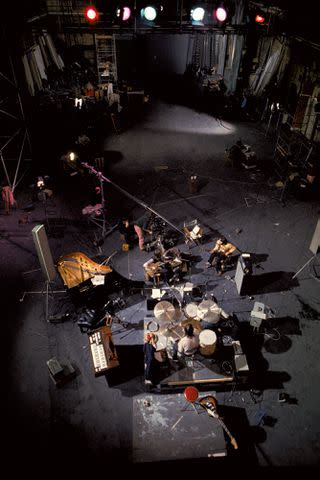
It seems like Let It Be is a tribute to adaptation — or adapting on the fly. The project shifted from a television concert special into a cinéma vérité documentary midway through the shoot. Can you talk a little about that transition?
It was a kind of learning experience because I'd never done a documentary before. Plus, it wasn’t going to be a documentary when I signed on — it was going to be a concert. So, you know, stay on your toes! But that was par for the course. And in any case, things were changing so rapidly and musicians themselves were changing rapidly because things were being thrown at them to do with how they presented themselves.
For example, Mick Jagger wanted to be an actor. He told me he read a book and someone had done a script of it. He asked me to read it and I said, “Sure, what’s it called?” And he said, “A Clockwork Orange.” He sort of offered it and asked if I wanted to do it. And then I said, “I don't know, seems really tough to do…” By the time we'd finished talking about it, the script had somehow left Mick Jagger and gone to Stanley Kubrick. Things like that were happening. You never were quite sure what was going to happen next in those days.
Also, a lot of the major groups — Beatles, Rolling Stones, Who — had short attention spans. Not for their music, but for other things. They'd go, “Yeah, we'll do that on Tuesday.” “No, no, we can't do that Tuesday. We’re going to be in the Netherlands.” “OK, let's not do it.” And so that was constantly happening. The other thing which was of concern to me was what I saw [when I shot] The Rolling Stones Rock and Roll Circus [in December 1968]. After we did it, the Rolling Stones thought the Who were better [onstage]. So the Stones wanted to reshoot their performance, but it never happened. And so that ended up getting shelved… for 28 years!
I didn't want the Beatles to lose their momentum. So when Paul came to me after the concert idea was off and said, “Should we stop filming?” And I said, “Well, no.” I thought, “Well, here's a chance to maybe do the documentary of the Beatles, which nobody has done before." Nobody had ever filmed them rehearsing. I didn't want to lose the chance, or risk the chance of their attention span going on to something else. So I was glad we stayed with them.
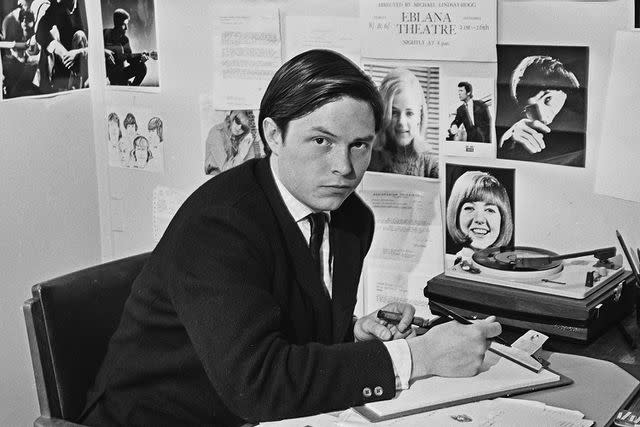
Watching Let It Be after Get Back, I was struck by the style of your movie. There were no chyrons, no voice overs — it was just total immersion. Was there a precedent for what you were trying to do? Maybe the Maysles brothers? I think I read that Paul had mentioned Andy Warhol…
It's funny, my best friend growing up was [Oscar-nominated director] Peter Bogdanovich. He was a year older than me, and Peter was a movie buff. He'd see three or four movies a day in a theater up on 88th Street. He could quote you scene by scene, line by line, any movie he'd ever seen. I'm not a movie buff the way Peter was, or Scorsese or anybody like that. My influences are very mixed. One of the movies I loved was called Come Back Africa by Lionel Rogosin. It was sort of a documentary, but it was people pretending to be characters. It was about a guy who comes from a township in South Africa and then comes to the city to get a job. It's a wonderfully passionate, not-totally-happy documentary about what it was like to try to get a job in a white community. I was struck by that.
So when I was doing Let It Be, I didn't particularly want to have a voiceover. I could have had a voiceover saying, “Well, George Harrison left the group, and that's why we left Twickenham Studios and went to Apple Studios when he came back, but he said before he came back he didn't want to do a concert…” It could have been a voiceover but I thought, “You know, we'll let ‘em figure it out.” And it was the same way when [keyboardist] Billy Preston came [into the sessions]. I thought, “Well, maybe I should say with a title card: 'The Great Billy Preston,' or something like that.” But then I thought, “Eh, let ‘em figure it out if they're interested.” And of course, musical people are interested. They know it was Billy, and they know what a contributor he is. But it’s like in the old days, before the internet. If you were going out for a meal with some friends and you didn't know who you were sitting next to, you'd start to say, “Where are you from? What do you do?” And you'd start to learn incrementally who the person is, what they do, and what they're good at. As opposed to now, pretty much we can look up anything on The Machine. So I just figured, “Let ‘em figure it out.” Maybe high-handed, but I didn't want to have a voiceover. I didn't think that was the right mood, or the right feeling for the picture.
Speaking of mood — the big line when Get Back was released was that it showed the levity that was supposedly absent in your Let It Be film. Watching Let It Be the other day, I saw an awful lot of happiness in it, as well. What was the mood like when the four were in the studio together? Obviously there was some tension when George left, but did it feel like they were nearing a split?
The Beatles were psychologically so interesting, having been together for such a long time. When they stopped touring in 1966, I think that had a very big effect on them because the other big bands kept touring. It makes bands more cohesive because they're stuck with each other. They're in a hotel room in Minneapolis and they can't leave the hotel because the crowd outside won't let them. So what are they going to do? They go down to the coffee shop, go get some breakfast and go back to their room. Nowadays they probably play video games, but back then they’d write a song.
That's partly what changed for the Beatles, because they stopped touring and then they stopped living so closely and intimately with each other as they had in Liverpool, or performing in the Red Light District in Hamburg. Back then they were in the same hotel room, And then they stopped and they had to start to think, “What is my life?” I was always kind of aware in Let It Be that that's the point I got them at. I'd worked with them in ‘66, but by the time we were doing ‘69 they were asking the question that often people do ask: “What is my life and where am I? “ Even though they were so successful and so talented — they kind of had taken over the world — it still was the same questions: “Who am I, where am I, what am I doing?”
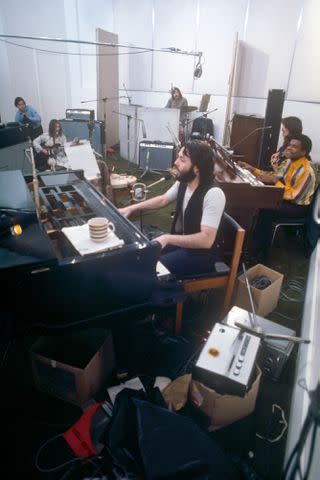
One of the things that I noticed about the film, especially seeing it on a big theatrical screen, was how beautifully you shot faces. There are so many tight shots of the Beatles’ faces. I loved the moment when you see the back of Paul’s head when he’s speaking very intently to John about wanting to get out and tour again. Instead of focusing on Paul, you just hold on John as his face registers this kaleidoscope of reactions and emotions. And there's the tight shots on the young policemen's faces as they grapple with their duty to shut down a free Beatles concert.
That frustration, yeah. When I saw that sequence of Paul talking to John in the dailies, I thought, “Well, we know it's Paul, because it's Paul's voice." He's got his beautiful dark hair. And then, of course, there’s the intimate things he's talking about. I thought it worked cinematically, and I was surprised that it's as powerful as it is. You don't have any crosscut of Paul. I didn't have a camera over there. We sort of weren't expecting it to go on so long — that’s why the camera zooms out, they put the clapperboard, and it zooms in again. I thought, in a funny way, it worked.
It's messy, but it works cinematically. There are very touching moments, like when they're doing “Two of Us” and John is whistling at the end. He looks up at Paul like,”Was that OK? Are we finished?” And, of course, because the Beatles’ faces are so familiar to us — not only now, but then — I thought, “This is gold just to have those faces.”
As we know from Get Back, it was a documentary without any clear aim for an ending for quite some time. What are your recollections of how they ended up on the roof?
I felt there needed to be a place for the documentary to go so it wouldn’t just be rehearsing the song, rehearsing the song, rehearsing the song. It needed a conclusion, and that's why we went up on the roof. That was as close as I could get them to going to [my original idea]: the amphitheater in Tunisia. That was an unexpected thing, going up to the roof. To get them on the roof was hard enough with the eleven cameras and the [camera crew] in the road and the two way mirror [with a camera] in the foyer [to film the police arrival]. But they got up there. And it was not a slam dunk even five minutes before we were supposed to be on the roof. There was still a sense of, “Well, do we want to do this…” I expected them to play the songs, but I didn't expect them to have so much joy in doing the songs.
When I saw it the other night again, it's just so sweet. The way they look at each other, the way John looks over at Paul, and Paul and John. You know, they went to school together. They started writing songs when they were 16. And George embraced his part as the lead guitar player. You look at them and you go, “That's good, isn't it?” And that's the thing which is so miraculous about the picture: I didn't do it, they did it. The connection between them is so potent at the end that it almost breaks your heart to see. Because then you know what happened. History took over, and you know what happened to John and George, who died so young. So there's a poignancy to the roof, as well as, And that's what I got from it the other night [at the premiere]. Because, for me, it's been a long and winding road.
For more People news, make sure to sign up for our newsletter!
Read the original article on People.


